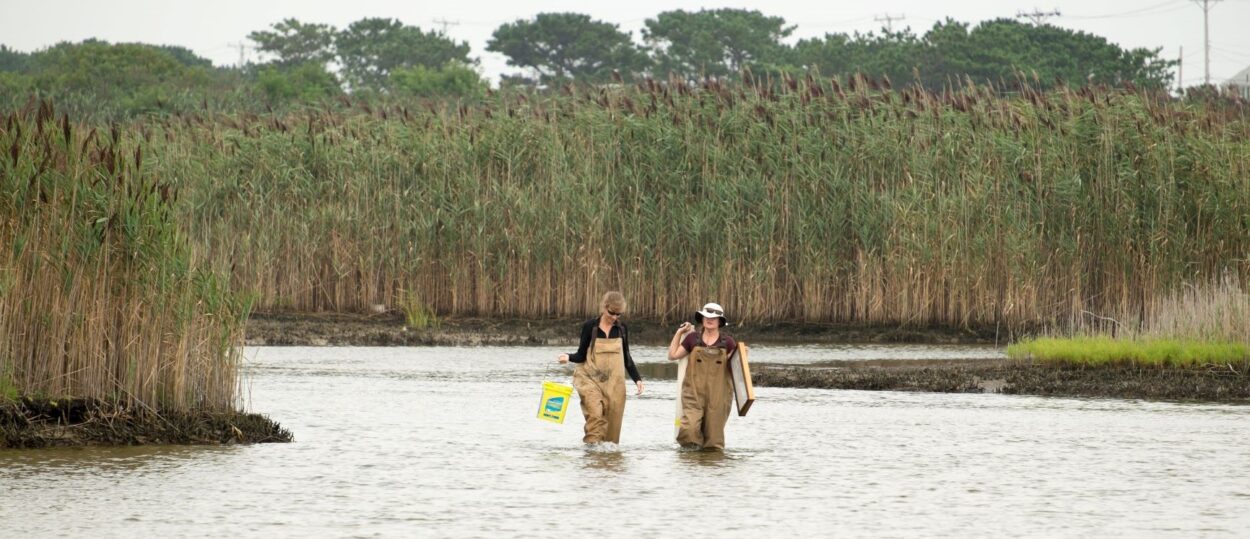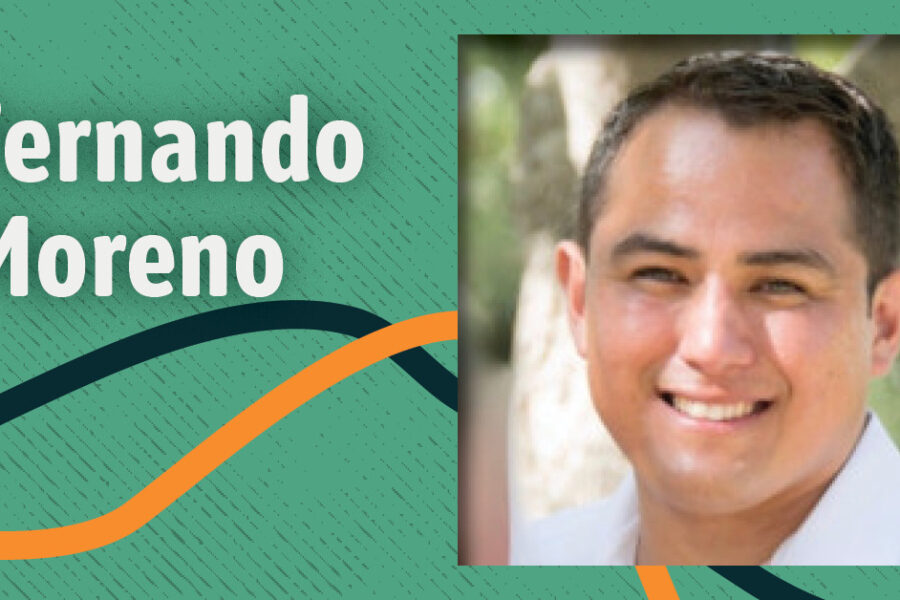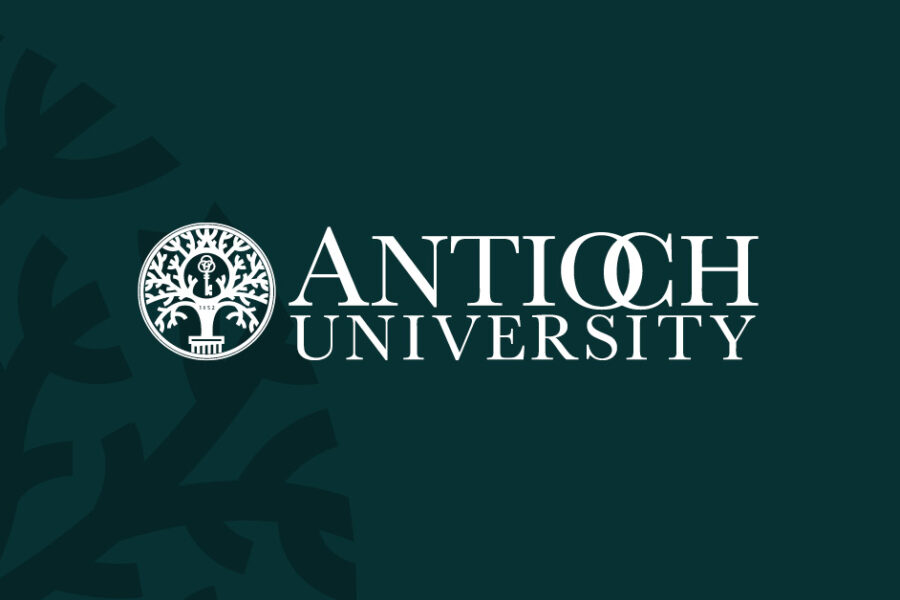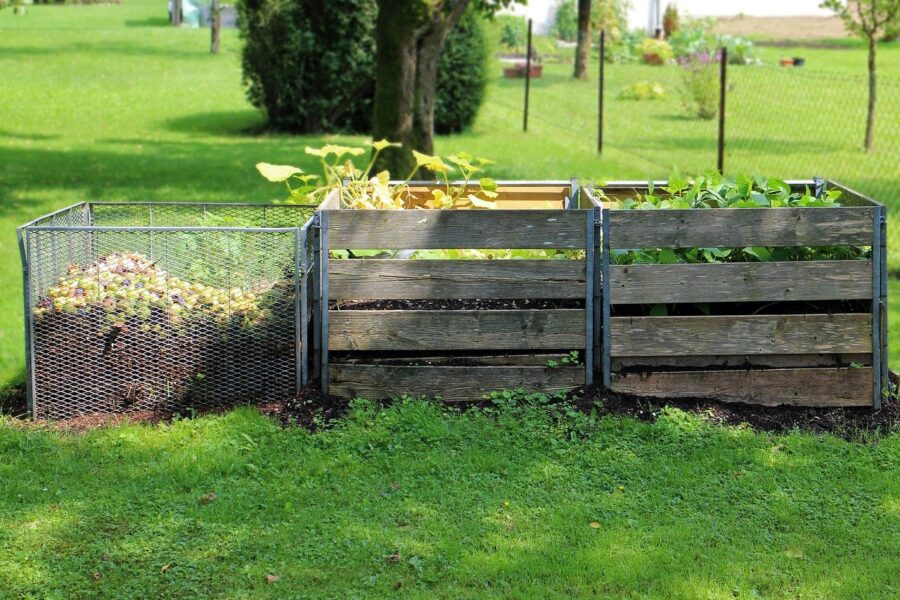A Systems Ecologist about the Ground
There is a whole world invisible to the eye. Day after day, this complex system operates without supervision, breathing and cycling and nurturing everything, from the smallest blade of grass to the largest terrestrial vertebrates. And where is this incredible living system responsible for the food we eat, the air we breathe, and the health of our ecosystem?
Well, it’s underfoot.
“There is a lot of research about soil ecology,” says Dr. Rachel Thiet, Director of the Conservation Biology concentration in the Environmental Studies master’s program at Antioch University New England. “I think it’s just a fairly opaque field because it’s not easily apparent to us what’s happening in the soil. Much of what’s happening is happening out of sight, and I think because of that, soils have not been treated as living systems. So they’re degraded and moved and developed on and not valued.”
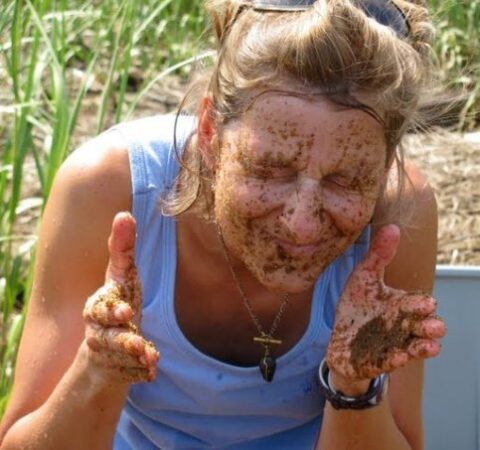
Dr. Rachel Thiet, Rae to her colleagues and students, is an affable, approachable educator with a zest for science and a healthy love for ecosystem processes that most have never given a thought.
“I consider myself a systems-ecologist: an ecologist who works across systems and at different scales in ecological systems.” Her office wall is piled with volumes of soil ecology journals, field guides to aquatic invertebrates, and volumes of complex chemical processes. “My training is primarily in terrestrial soil ecology as well as now aquatic sediment ecology.”
She has an easy demeanor and maintains constant but relaxed eye contact throughout a conversation, letting one know that they have her full attention at this moment. But every so often, when a particularly interesting or unusual fact strikes her, she interrupts herself with bursts of exclamation and passion.
“I can’t explain it; it’s just something that I think is fascinating,” She concludes at the end of one such explanation about soil organisms. Because of its underfoot nature, soil ecology—particularly the microscopic bacterias and invertebrates that call the soil home—is a very often undervalued and overlooked aspect of ecology. But soil organisms drive nutrient cycling and play an essential role in pulling carbon out of the atmosphere.
Rae had always been enthralled with ecology enough to know she wanted to make it her life’s work. She completed her Masters in Natural Resources Wetlands Ecology at Ohio State. During her master’s work, she first became exposed to community ecology and the inner workings of soil ecology from a professor who focused on above and below-ground interactions.
“It just blew my mind.” She recalls, “I had never been exposed to that information before.” Thoroughly hooked, Rae stayed at Ohio State to complete a PhD in Ecology, studying soil microbes in areas of conservation concern. Her passion for dirt has brought her to Antioch, where a unique opportunity to monitor a complex system has dominated her research questions and guided her teaching methods.
Now, for the past decade and a half, Rae has been ankle-deep in her system of choice: tracking the below-ground processes of a tidal lagoon on Cape Cod and watching the system churn back to life above and below after decades of degradation.
On the shore of Cape Cod
East Harbor is a 290ha back-barrier salt marsh lagoon nestled just inside the inner “wrist” of Cape Cod. With Provincetown to the northwest, it sits right alongside Route 6 — the main road that tourists and locals travel along the cape from Orleans — a slightly softer meeting of land and ocean to gaze upon than the wave-carved beaches. Sitting at this particular spot, the thinnest strip of land on the cape, the lagoon serves as a reminder that this is where the ocean dominates, where tides have the final say over the shape and purpose of the land. To the untrained eye, the lagoon may look like just a big lake with several inlets. But anything more than a cursory glance reveals the complexity of this system.
The lagoon receives twice-daily tidal input from Cape Cod Bay, the ocean delivering a deluge of cold, nutrient-poor water and flushing out the accumulated salts and wastes of the lagoon in a tight, 12-hour cycle. In some places, this wide, shallow lake can be deceptively deep, especially during high tides.
“Low tide is only about 3 inches deep, and the high tide washes against a wader’s chest [in Moon Pond],” Rae explains, describing a small section of the lagoon that sits before a culvert. “You get a big tide range there.”
The living components of this community represent those plants and creatures that rely on the extremes of coastal life to grow, thrive, and spread. The thick spartina grasses chafe against each other in the wind; finfish and invertebrates taking refuge in their roots. Flocks of migrating shorebirds and waterfowl find refuge in the water, consuming necessary calories before their long flights further north.
But it is what’s going on beneath the surface, both of the water and thick mud, that captures the vitality of this landscape. The incoming tide sloshes across the soil, infiltrating hundreds of imperceptible holes in which bivalves are burrowed. These creatures, more commonly called by their species names—quahogs, soft-shelled clams, scallops—crack open their shells as the water floods over them. They suck water in through a one-way tube, letting it pass over their gills and organs, and expelling it out another valve, hence the origin of their class name “bi-valve.”
“They’re important bioturbators,” Rae explains, which means that shellfish mix and agitate the sediment to bring in oxygen and nutrients. Their simple feeding process holds nutrients in the system, agitates the water enough that oxygen is added, and builds a base of protein for the vertebrate species of the lagoon to sustain themselves on. “They’re also really important in clarifying the water column. As filter feeders, [shellfish] remove planktonic algae from the water. They also immobilize nutrients by taking in inorganic nutrients and incorporating them into their biomass.”
Shellfish are an essential food source for birds, fish, mammals, and other invertebrates like crabs. Their accumulated biomass under the sand builds a base of protein for the vertebrate species of the lagoon to sustain themselves. Without shellfish, much of the estuarine and salt marsh food web would collapse.
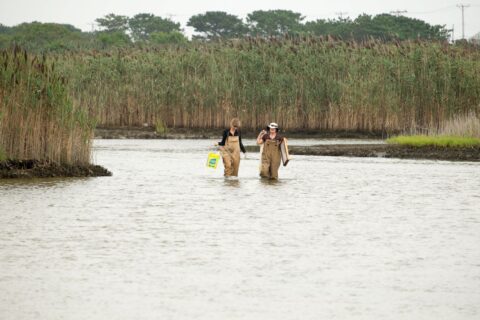
A Rebooting System
Many salt marshes in the United States and around the world were previously degraded by tidal restrictions in the 18th and 19th centuries when they were sealed off to create farmland or used to harvest salt hay. The East Harbor lagoon was no exception. For most of the 19th century, East Harbor was a ship harbor serving Provincetown for the bait fish industry. In 1868, the large inlet connecting the marsh to Cape Cod Bay was filled in and diked. A wooden bridge was erected over this dike in preparation for the railroad route planned to Provincetown in 1873. By the 20th century, the former unrestricted inlet into the system was now a road with a culvert fitted with a one-way clapper valve — freshwater could escape the lagoon, but no saltwater could get in.
While salt content dwindled and nutrients accumulated, East Harbor became toxic to its native salt-loving species. The waters were too warm and too fresh for many of the salt marsh grasses and shellfish to tolerate. As they died off, freshwater species such as invasive giant reedgrass and purple loosestrife began to dominate the system. With an unclaimed bounty of nutrients left behind, algal species bloomed prolifically, coating the surface of the lagoon, sealing off the soils from the sunlight, consuming dissolved oxygen, and then dying en masse, resulting in further oxygen depletion as microbes decomposed their dead biomass.
Such a massive algal bloom occurred in September of 2001, choking the lagoon with scum at the height of the tourist season. Not long after — as the oxygen supplies in the lagoon were greedily sucked up by millions of photosynthesizing cells — tens of thousands of suffocated alewives and white perches floated to the surface. There, they baked in the warm sun, washing the area in a thick, unpleasant odor.
“What happens in the system is felt very intimately by tourists and locals,” Rae explains, recalling that 2001 fish kill. “Such events are talked about. It [was] bad for the economy, bad for tourism.”
The residents of Truro and Cape Cod National Seashore (CCNS) (the entity responsible for much of the public land around the lagoon) came together after the incident, intent on finding some way to restore the system so that such a large fish kill was less likely to happen. Attention immediately turned to the culvert under Route 6. Removing it would allow unrestricted tidal flow into the lagoon, washing away the excess nutrients and cleaning out the scum. But the culvert was on a very popular road controlled by the town, and removing it would affect dozens of private landowners surrounding the lagoon.
After much deliberation, the decision was made to prop open the clapper valves that kept saltwater from entering the lagoon, thereby allowing slow flushing that followed the tides and kept the culvert intact. The first tidal flush of the lagoon began in November of 2002.
Research-Informed Policy: A Bottom-up Approach
The return of tidal water to the lagoon meant that the landscape was going to change dramatically. CCNS and their partners were eager to monitor the lagoon and document how restoring the system was going to impact everything around it.
Just as the restoration was beginning at East Harbor, Rae was preparing for the start of her career at Antioch after completing her post-doc at UNH. It was 2003, and she’d spent much of the years prior working in a technical lab analyzing soil samples and now found herself moving to a university without any laboratory infrastructure.
“I came to Antioch because I saw it as a wonderful opportunity to teach — which is my first passion, but I had to adjust. As a professional, I was thinking: how am I going to be a soil ecologist at a place that doesn’t have a lab?”
By chance, it was a student who brought her to East Harbor. Early in her Antioch career, Rae was approached by Brett Thelen, a master’s student who was interested in the Cape restoration project as a thesis after having served in the area as an AmeriCorps member. Knowing Rae’s background in belowground processes, Brett approached Rae to be her thesis advisor.
“I can’t take credit for it,” Rae admits, “it was a matter of having the right training and also being in the right place at the right time. If it hadn’t been for Brett, I’m not sure if I would have ever become involved with the project.”
That first connection brought Rae a perfect opportunity to combine her teaching with her love of soil ecology. She could continue working in soil ecology without needing access to a lot of lab equipment and explore new kinds of questions and ideas in her field. The project also gave her a unique opportunity to collaborate with many partners over a long period of time.
Since 2005, Rae’s AUNE team has worked alongside a team from CCNS and other collaborators from the Center for Coastal Studies to monitor the outcomes of this restoration project. Over this time, they have generated 16 years’ worth of data about the lagoon and surrounding landscapes.
“One of the things that we’re always looking at first is what are the ecological functions of any system?” Rae begins, thinking back to the concept of the project itself.
“A salt marsh [like East Harbor] is great for filtering out pollutants, providing wildlife habitat, sequestering carbon, mitigating coastal flood damage, providing tourism and aesthetic opportunities, and providing habitat for recreational and commercial shellfishing. [But]…how quickly do [these functions] come back, and how quickly might we be able to consider this system stable and sustainable enough…to open it up to recreational shellfishing? And we’re still in the process of evaluating that. Every system has its own quirks, and you have to work with what is unique about each system. This one has a historical legacy of degradation. So how effective can restoration be given this historical context?”
Since the restoration has reawakened this stagnant system, the researchers have focused on how the ecological community responds to the return of tidal flushing. Tidal energy is a significant change to bring back into a system, and there are many parts set back in motion by the twice-daily floods.
Initially, the project began looking at shellfish restoration in the lagoon since they were a great window into soil processes and energy available in the food web (not to mention the local interest in an eventual fishery). But as the years progressed and the landscape changed, new populations began to catch their attention. The project’s scope deepened to include studies of the estuarine plants and macro-algae, the changing water and sediment chemistry, and the benthic and epibenthic invertebrates such as crabs and finfish. Even tiny soil organisms have gotten their turn: annelids, polychetes, flatworms, and nematodes. Everything was responding to the tidal energy in fascinating, interconnected ways.
Having such a long and varied data set allows for genuinely unique observations to be made about all parts of the ecosystem.
“It’s quite unusual to follow the benthic invertebrate community,” Rae notes, “it’s just not as commonly studied. People are more interested in vertebrates and plants.”
But according to Rae, starting with the invertebrates in the soil allows for a picture of the system to be examined from the base. The invertebrates form the bottom of the aquatic food web; their health and abundance are indicative of the food sources available to vertebrates that call the system home. Additionally, predicting where shellfish will be found requires monitoring a number of ecosystem variables and comparing them to pinpoint the perfect habitat: pH, dissolved oxygen, salinity, eelgrass density, and many other factors.
“The soil and water monitoring are supplementary to the shellfish monitoring; we’re developing habitat models so we can understand where the optimal habitat is in the system and if we are maximizing [it]…to benefit benthic organisms, including but not limited to shellfish.”
As of 2021, the lagoon is not yet open to recreational shellfishing. But Rae and her collaborators, including Antioch Conservation Biology students, continue their research into the system: perfecting their habitat models to see where shellfish can thrive and how much space they have to expand in the lagoon. If the area is one day opened up to shellfishing, their work will be invaluable to monitoring the fishery’s impact and documenting the impact it has on the system as a whole and the local community.
Cultivation of Collaboration
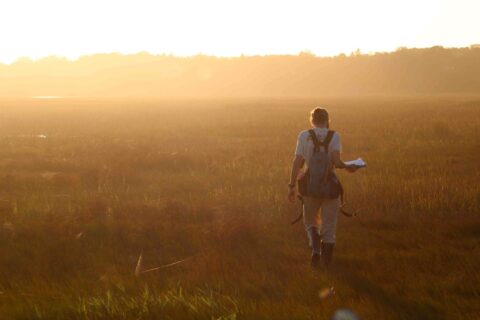
Rae is not a policymaker, nor does she regularly interact with those who make the local policy in Truro. But she provides the necessary information for these parties to decide on a plan of action for East Harbor.
“The work that I do informs [policy] work. The liaison with the public is Cape Cod National Seashore; the folks that I work with there are in contact with policymakers and stakeholders every single day on the ground.”
Cape Cod National Seashore is an extension of the National Park Service that manages 44,600 acres of public land along the Cape, including most of the area around the ocean-side border of East Harbor. But placed all along the Bayside of the lagoon are private holdings: beach houses and hotels. Because of this divide, management of the lagoon must be shared by CCNS and all stakeholders with a claim to the shoreline and natural areas of the lagoon; namely, residents of the town of Truro.
Since they have begun looking to restore the area, CCNS has had to build a lot of social capital with private landowners to gain support for work. The culvert that was opened is controlled by the town of Truro, but monitoring of the lagoon is conducted by ecologists tied to CCNS and the other research collaborators on the project.
But after 16 years of watching the lagoon recover, the relationship between the researchers and the public has only strengthened.
“Because we’ve seen such a rapid and successful recovery of the system after the partial restoration in 2002, it’s very clear that the town of Truro is sold on the restoration.”
In2018, the culvert under Route 6 partially collapsed, limiting tidal exchange in the lagoon once again. Moon Pond’s tide range has been severely restricted again from the collapse, as water can no longer drain from the system properly. But the town is so invested in the project that they have already designated money to repair it. It’s an expensive repair, but they see the benefits and want their actions to aid the restoration effort as best they can. Even before the culvert collapsed, they received bids to repair it and increase its size to further improve tidal exchange into East Harbor.
“If the culverts weren’t there, the lagoon would be less of an estuary and more of a salt marsh. You might even get a mudflat (which is perfect for shellfish) at low tide. Because of the restriction, it looks like a lake. The tide range in the lagoon [with the culverts] is so small as to be imperceptible.”
At this point, Rae has extracted a color map of the lagoon to better narrate the story of the landscape and how the culverts factor into this complex story of land management. It turns out that only part of the marsh has very good tidal flushing; in addition to the Route 6 culvert, there’s another culvert still in place on the southern end of the lagoon that restricts tidal exchange to only 2-3 cm per day. Part of the research project’s current goal is providing evidence to CCNS and the town that this second culvert needs to be better managed.
“We’re not getting enough tidal flushing in the lagoon.” Rae explains, “So it’s warming up late in the season because it’s not getting flushed, and…[primary production] in the lagoon is dominated by macro-algae, which we don’t want. We want more eelgrass and more widgeon grass because that is more characteristic of a highly functioning salt marsh that’s providing good habitat for wildlife. So the more flushing we get in the lagoon, the less macro-algae we’ll get and hypothetically, the more eelgrass and widgeon grass we’ll get.”
They don’t yet know how they will increase tidal exchange through this second culvert, or even when, as the collapsed culvert takes priority. But managers and administrators in CCNS and South Truro recognize the importance of making a change there eventually to continue restoration of the system.
In addition to the ecological needs of the system, CCNS has considered the historical and cultural value the landscape holds. “I think the two primary outcomes from the public’s perspective would be to first, have the whole system be a well-functioning sustainable salt marsh estuary. And the second goal would be potentially opening up the site to recreational shellfishing.”
Having sustainable recreational shellfishing in the lagoon would restore an important cultural activity to the region. People have been living on Cape Cod for well over 9,000 years, in part thanks to the bounty of the Bay and the mudflats. Shellfishing was a daily activity for much of humanity’s history on the Cape, as common as picking herbs from a garden. Gathering shellfish from the salt marshes and lagoons of the Cape has not been possible since the 1950s.
As Rae has seen in her research, shellfish are also an essential function of a healthy estuary and salt marsh. So they provide the perfect thermometer with which to monitor the lagoon’s health.
“The nice thing about studying bivalve shellfish — at least in the beginning — was that we were looking at whether the salt marsh was actually giving us representative salt marsh invertebrates and whether or not this project might eventually allow the town to open up the marsh for recreational shellfishing.”
It is an ongoing process, but one with firm support from all the people affected. Perhaps in the next few years, local shellfishers will be seen digging in the mudflats again.
16 Years on the Marsh
When one works on the same landscape for many years, it is impossible not to feel a deep connection. Having waded in this system for over 15 years, Rae has many fond memories of watching the passage of time.
“What I love about it the most is just being out in such a beautiful setting. It’s gorgeous. I love walking through the system and just seeing what’s swimming and crawling around, what’s nesting.” She smiles at her memories of walking the shore. “It feels like every single year I’m there, there’s a new group of organisms.”
As the tides have returned, native species have indeed begun to trickle back into the lagoon. Spartina grasses began to recolonize space previously taken over by Phragmites. One year, the oysters returned, resuming their filtering of the water column like no time had passed. Moon snail egg casings appeared another year, indicating that the marsh was beginning to support reproductive populations. Horseshoe crabs are now using East Harbor, their thick, flat shells scuttling over the shallows to reach their nests on the beaches. Raccoons have ventured into the system to feast on the bounty of prey now available.
“We’re seeing evidence of a very dynamic system…it’s not just as simple as providing hydrology, and everything fixes itself. It is a matter of providing proper hydrology, and things start to work again. Every year, there’s more complexity in the system. That’s been exciting.”
With more to study on the lagoon, more Antioch students are finding their way out there. Almost every year, Rae finds herself with new graduate students out at the harbor.
“I developed excellent relationships through CCNS as a result of my work with Brett on her project. And what then happened was a series of continuing field and lab studies involving other Conservation Biology students with me advising in collaboration with CCNS.”
After Brett graduated, Rae continued to have students going out to East Harbor to look at shellfish distribution, recovery, and population growth. From there, the project kept deepening as new students brought new questions to the same system.
Rae has advised over ten masters and doctoral projects centered around the lagoon’s restoration and has published papers with most of them. These include studies of horseshoe crab breeding, soft-shell clam filtering of macroalgae, and invasive green crab presence in the lagoon.
“It’s interesting…” she notes, as she finishes listing off all the students she’s worked with out there, “…all of the students that I’ve had working in East Harbor with me have been women. I’ve worked with men in other systems on Cape Cod, but on this specific project, it’s been all women.”
Beyond her research, Rae has also been teaching a field study course for graduate students on the Cape. Every other fall, she takes 12 students out into the lagoon to give them a better understanding of estuaries, marine wildlife, and underground processes.
Here, her passion for teaching shines. “I love taking students in there, in our chest waders with nets, and just having them walk around and catch things.” She sits up suddenly, beaming as the memory comes back to her. “In the fall of 2017…we saw live sea scallops swimming through the water! How many people have seen a big sea scallop just swimming away from you? It’s just amazing. One student caught the sea scallop and held it up, and it was still flapping its shell, trying to get away. Just seeing students who have never walked in an estuary, never walked in a salt marsh realize: holy cow, there’s just so much going on here, all underfoot and often obscured by the water…that’s fun. I enjoy discovering it every year and also watching students discover it, many of them for the first time.”
Rae maintains hope that, as the restoration continues, more people get the opportunity to discover the wonders of the lagoon and support the restoration efforts.
“My hope is that CCNS and the town of Truro continue to invest in infrastructure improvements to maximize tidal exchange. Another hope is that we can continue our ongoing research that involves multiple collaborators and affiliations and continue to talk about the restoration story that comes into focus over time.”
In the interim, you can find Rae sifting through the soil, searching for the answers to questions that lurk out of sight underfoot.

